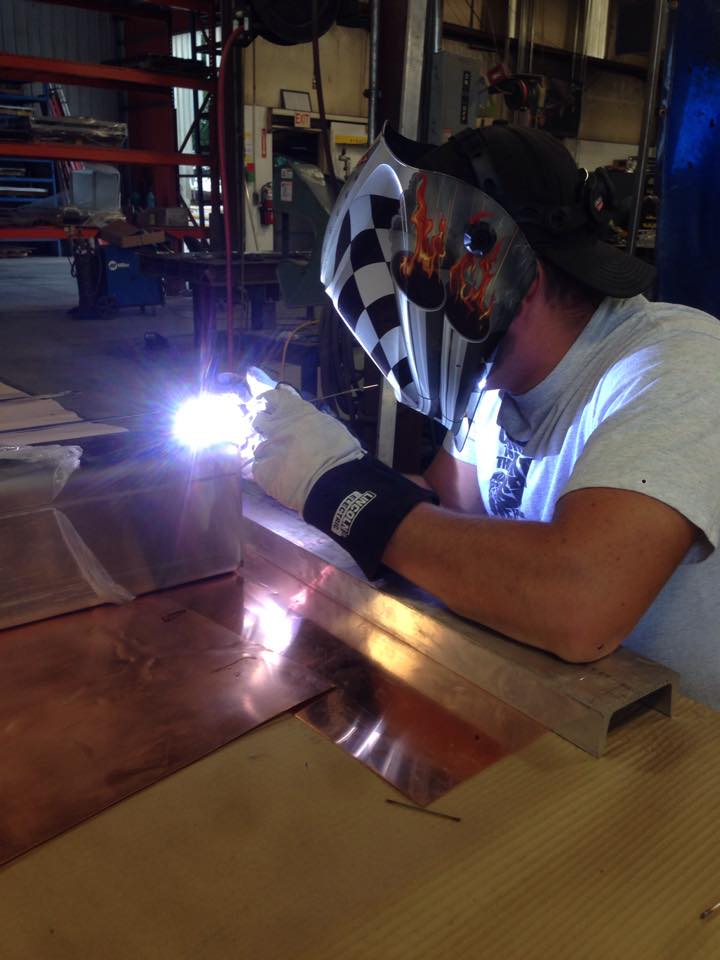
Three of the most common welding fabrication processes used for metal fabrication are metal inert gas (MIG), tungsten inert gas (TIG) and shielded metal arc welding (Stick). Typically, metal thickness, finish, location and application determine which welding process will best benefit a particular project.
MIG Welding is considered one of the easier to learn welding processes for welding fabrication. MIG welding uses an electric arc and a shielded, continuous wire feed to melt and fuse the base and parent metals together. MIG welding can be used with all types of metals and alloys including aluminum, stainless steel and other forms of steel in a variety of metal thicknesses. Successful application depends on electrode composition; type and purity of shielding gas; and process variables such as current, voltage, and type of metal. MIG is often used in the production process due to high-productivity, cost, and overall strength. This mechanized process can be more complex than other welding processes.
Like MIG, TIG welding uses an electric arc to create the weld. In contrast to the continuous wire feed used in the MIG welding process, TIG welding requires longer tungsten rods with a slower feed into the weld puddle. The tungsten electrode provides electricity and works together with inert gas to create a weld where one part melts into another. TIG is considered one of the most versatile arc welding processes and requires a high skill level. Since the process isn’t easily automated, TIG can be more costly than other types of welding, but it produces a superior weld. TIG is can be used with most types of metal, and is commonly used with thinner gauge sheet metal.
One of the most widely used welding processes, Stick welding uses a fixed length electrode and an electric power source to join metals. The core of the covered electrode is a solid metal rod coated with minerals and metal powders that provide filler metal for the joint. Alternating or direct current can be used as long as the power source is able to control the current. Stick welding is a very versatile welding process that can be used just about anywhere thanks to the lack of gas and water hoses. The Stick welding process is also less susceptible to winds and drafts than other arc welding processes, making it ideal for outdoor applications such as bridges, navy ships and oil refineries. Stick welding is suitable for most commonly used metals and oils. However, Stick welding should not be used with reactive metals such as titanium and zirconium because the shielding does not prevent oxygen contamination of the weld. Stick welding is considered a manual welding process, and therefore requires more operator skill than an automated process like MIG welding.